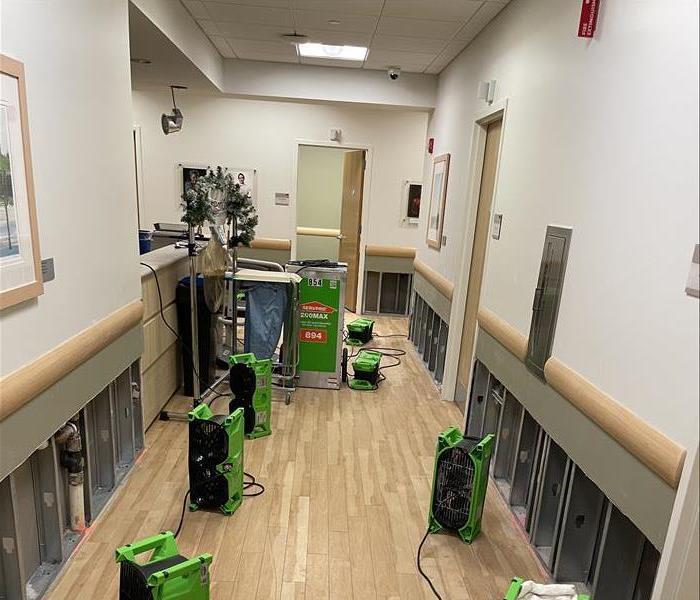Improving Indoor Air: The Dehumidification Process Explained
3/13/2024 (Permalink)
 Understanding the science of dehumidification is important to maintain a healthier indoor environment.
Understanding the science of dehumidification is important to maintain a healthier indoor environment.
Excess humidity in indoor spaces not only creates discomfort but can also lead to a variety of problems, including mold growth, structural damage, and compromised indoor air quality. Understanding the science of dehumidification is crucial for mitigating these issues and creating a healthier living or working environment.
The Role of Relative Humidity
Relative humidity refers to the amount of moisture present in the air compared to the maximum amount the air could hold at the same temperature. It is a key factor in determining indoor comfort and air quality. Ideally, indoor RH levels should be maintained between 30% and 50% to prevent the conditions conducive to mold and dust mites.
Effects of High Humidity
Mold Proliferation:
Mold thrives in damp environments. When humidity levels are high, mold spores can settle and multiply, posing serious health risks to occupants and causing structural damage.
Dust Mites and Allergens:
High humidity provides an ideal breeding ground for dust mites and microscopic creatures that can trigger allergies. Maintaining optimal humidity levels helps control dust mite populations.
Structural Damage:
Excessive moisture can compromise the structural integrity of buildings. It can lead to rot, warping, and decay of wood, as well as corrosion of metal components.
The Dehumidification Process
Dehumidifiers play a pivotal role in controlling indoor humidity levels. These devices utilize a simple yet effective process to extract excess moisture from the air. Dehumidifiers pull in moist air from the environment, guiding it over coils that are colder than the dew point. This causes the moisture in the air to condense into water droplets.
The condensed water is collected in a reservoir or expelled directly through a drainage system. This process leaves the air drier and more comfortable. The now drier air is reheated before being released back into the environment. This ensures that the dehumidification process doesn't compromise the overall temperature of the space.
Benefits of Dehumidification
By maintaining optimal humidity levels, dehumidifiers inhibit the growth of mold, protecting both the structural integrity of buildings and the health of occupants. Reduced humidity levels also contribute to improved indoor air quality by minimizing the proliferation of allergens such as mold spores, dust mites, and bacteria. Dehumidification helps protect valuable possessions, including furniture, artwork, and electronic equipment, from the damaging effects of excess moisture.
Spaces with lower humidity feel more comfortable, even at slightly higher temperatures. This can lead to energy savings as occupants may rely less on air conditioning to achieve comfort. When indoor air is properly dehumidified, HVAC systems operate more efficiently. Dehumidifiers reduce the workload on air conditioners, leading to energy savings.
Choosing the Right Dehumidifier:
When selecting a dehumidifier, consider the size of the space, the severity of humidity issues, and the desired features. Portable units are suitable for smaller areas, while whole-house dehumidifiers integrate with HVAC systems for comprehensive moisture control.
Understanding the science of dehumidification is important to maintain a healthier indoor environment. By controlling relative humidity levels, dehumidifiers not only prevent structural damage and mold growth but also contribute to improved indoor air quality and overall comfort.

 24/7 Emergency Service
24/7 Emergency Service